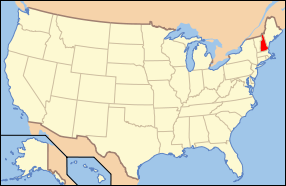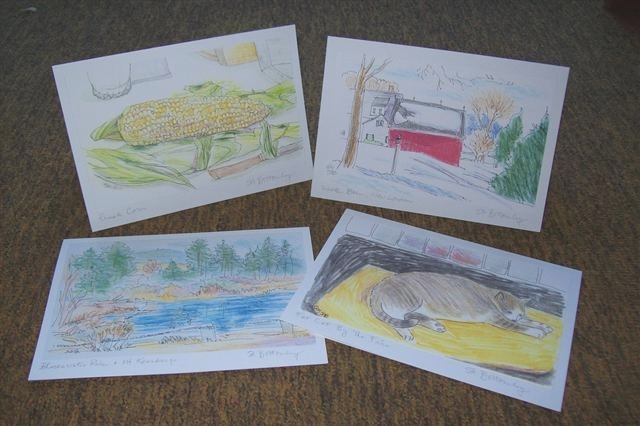Near the Rialto Bridge in Venice, thousands of carnival masks overflow the stalls onto the narrow streets. As I write this, carnival season is in full swing in this island city in Italy.
I drew this from a photo that I took in 2007, looking down on the roof of a mask stall from the bridge. This is the exception that proves the rule: I don’t work from photographs.
In New England, and especially New Hampshire, rather than big Mardi Gras festivals we are just gearing up in expectation of sugaring season. Which is the boiling off of the sap from maple trees into syrup and sugar. I drew this sugar house in Newbury, NH last year, after being inside enjoying free samples and buying some products too.
Forty gallons of sap boils down to one gallon of syrup. I like the darkest grade of syrup as it has the most intense maple flavor.
If you are a local reader, save the dates of March 22 and 23 for the 2014 New Hampshire Maple Weekend, when maple producers all around the state will have their open houses, offering tours and great free samples, and product sales.
There is still plenty of snow on the ground in New Hampshire. On a cold, sunny day I sat in the car to draw the Barrett House in New Ipswich, along the Massachusetts border.
Also known as Forest Hall, it was built about 1800 for a young bride and groom. The groom’s father invested well and made his money from a glass factory, a toll road, a canal, and a cotton mill—New Hampshire’s first. In a spirit of friendly competition, the groom’s father built the house, while the bride’s father provided the furnishings.
I read that this house was one of the locations for the 1979 Merchant Ivory film The Europeans, based on a novel by Henry James. The building, open to the public in the summer, is operated as a non-profit museum by Historic New England. I might return, even though it is not an easy drive from our town to here. All back roads. But scenic.
I thought the Barrett House with its white façade and green shutters was an adequate segue to this one, the town common in Wentworth, NH. The white clapboarded, steepled building is the Wentworth Congregational Church.
I squeezed in half of the town bandstand on the far left. It is very close to the viewer and not really as tall as a church.
After this posting, there still remain ten towns from my DRAW-NH project that I have yet to post online. Every month I whittle the number down by a few.
Last Saturday’s indoor market was not well attended. It takes place in the winter months in Whipple Hall (the town hall) here in New London, NH. In my spare time I sketched the First Baptist Church through the window of the town hall. There is no second or third baptist church. It is February and the winter has been long, cold, and icy. So who could blame me for imagining spring leaves on the trees?
So you see my thought pattern here....one green cupola to the next. This time the cupola sits atop the Stevens Memorial Hall in Chester, NH, built 1910. The building serves as the town hall and meeting space. To the right is a small corner of the town post office.
I sure was taken with the large blue spruce tree at the edge of the entrance way.
I needed more color on this day. My eyes found my begonia plant, nicely grown by someone in a greenhouse and shipped to my local grocery store for mid-winter purchase. It has lived in our home on the coffee table for a month or so, quietly doing its blooming business.
Main Street in Colebrook, New Hampshire has an unusually colorful row of painted wooden, false fronted buildings. I didn’t make any of this up. No need to.
We catch the reflected colors of sunset from our window which faces northeast. Not west, but east. The deciduous trees on the ridge are still dormant, or sleeping, without their leafy canopies.
I drew this yesterday. There were more pink clouds today! Lovely. We miss seeing our ridge once the intervening trees (omitted here by means of artistic license) have sprouted their leaves and overtaken the scene.














No comments:
Post a Comment